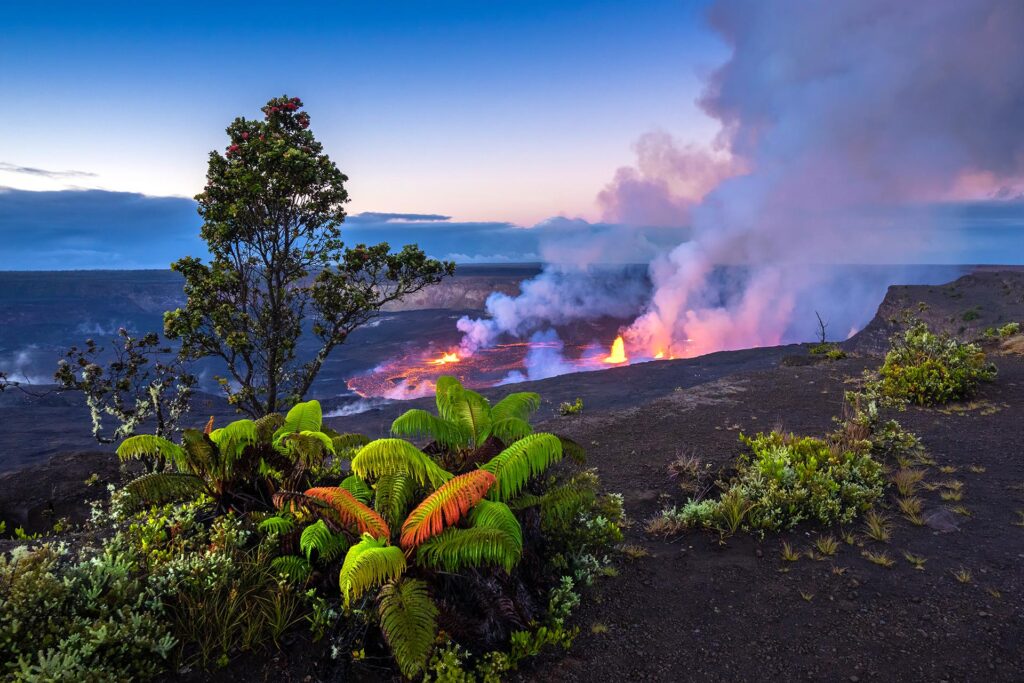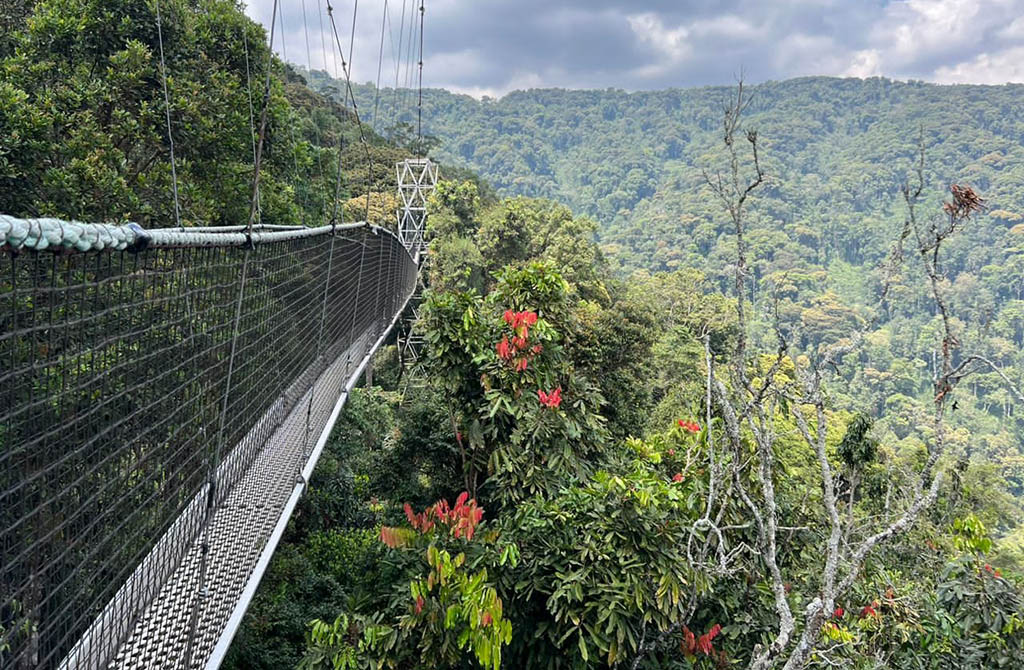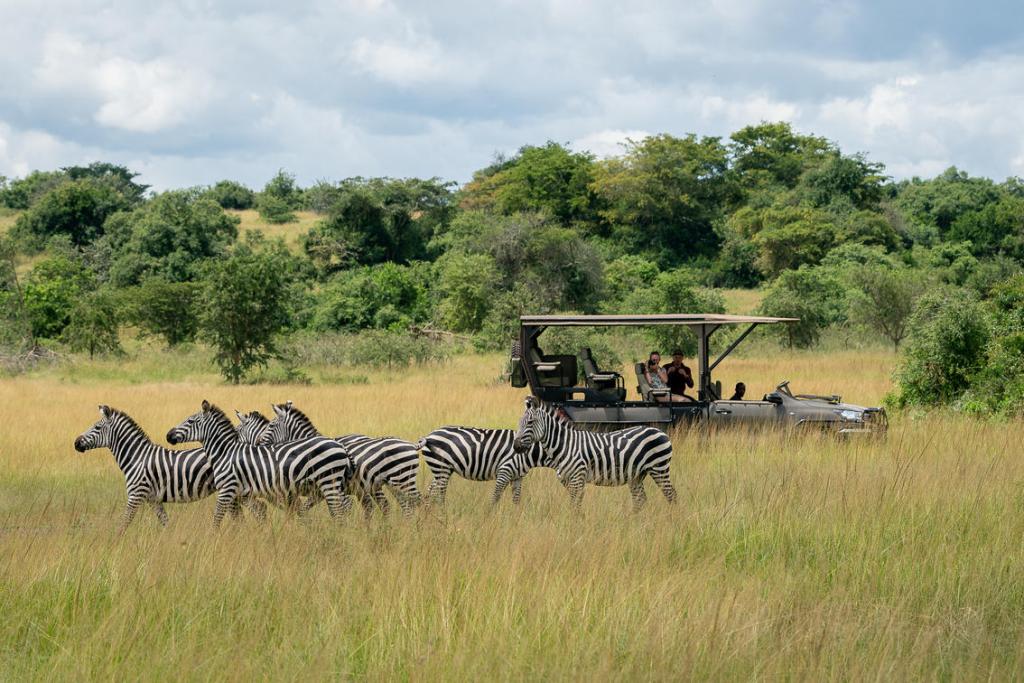VISIT RWANDA
When it comes to things to do in Rwanda, nearly every tourist has one activity at the top of their itinerary: gorilla trekking. The mystique of getting up close to creatures who share 99 percent of our DNA captivates travelers from around the world, and there’s no better place than Rwanda to do it. The country has made serious strides in conservation to protect the animals.
Nature lovers can go on safari in Akagera National Park and get a bird’s-eye view of Nyungwe Forest from a canopy walk. If you’re interested in culture, check out the fascinating exhibits on traditional customs and beliefs at Rwanda’s Ethnographic Museum. Don’t miss the royal cows (and the singers who croon to them) at the King’s Palace Museum.
Make the most of your experience with our list of the top tourist attractions in Rwanda.

Volcanoes National Park
Without a doubt, the number one thing to do in Rwanda is gorilla trekking at Volcanoes National Park. Sharing a border with Uganda and the Democratic Republic of the Congo, this national park in Rwanda is home to a growing number of critically endangered mountain gorillas. Experts estimate that there are about 600 gorillas in the park—a significant increase from around 240-250 individuals in 1981.
The trekking experience typically lasts between four and eight hours, most of which is spent hiking through mystical bamboo forests, wild meadows, and swampy areas. Guides from the national park service will eventually lead you to one of the habituated gorilla families. You’ll spend an hour observing the creatures as they eat, care for their babies, and interact with one another.
Gorilla trekking in Rwanda is largely considered a safe activity. The gorillas are mostly apathetic to their human visitors. Armed guides, who use a bunch of clicking sounds to communicate with the gorillas, keep guests safe from potential dangers, making the experience one that you’ll never forget.
Want to learn more about mountain gorillas? After your trekking adventure, head to the Dian Fossey Gorilla Fund International Karisoke Research Center in the nearby town of Musanze. It contains a small, yet robust museum all about mountain gorillas and the work of conservationist Dian Fossey, whose efforts to protect gorillas were made famous by the 1988 drama, Gorillas in the Mist.

Nyungwe Forest National Park
One of the most important forest conservation areas in all of Africa, Nyungwe Forest National Park contains a spectacular array of biodiversity, including 1,068 plant species, 322 species of birds, and 75 types of mammals. Most tourists come to this rainforest to track chimpanzees, which have been habituated to humans by park rangers. This animal encounter is a fraction of the cost of gorilla trekking, yet no less memorable.
Hanging out with primates isn’t the only thing to do in Nyungwe. The park is also home to the only canopy walk in East Africa, roughly a 90-minute hike from the Uwinka Visitor Center. You’ll walk across a 91-meter-long suspension bridge dangling more than 50 meters above the verdant rainforest, getting a dizzying view of the treetops and mountains in the distance.
Got a fear of heights? Skip the canopy tour and instead walk along one of the park’s 15 hiking trails for an invigorating adventure that doesn’t fight gravity.

Akagera National Park
No trip to Africa is complete without a game drive. Tourists can scratch the itch to go on safari just two-and-a-half hours away from Kigali at Akagera National Park. Managed by the African Parks organization, Akagera and its biodiversity have made an incredible recovery from near decimation after the Rwandan genocide. The 1,140-square-kilometer expanse (one of Central Africa’s largest protected wetlands) now boasts all of the Big Five animals, along with an abundance of birds and antelope.
You’ll need to have a lot of luck to spot a lion or rhino—conservationists are still working on boosting their populations, and for now, there aren’t that many at Akagera. However, you’ll have no trouble spotting zebras, hippos, Nile crocodiles, elephants, and giraffes on a self-drive safari.
The landscape itself is just as spectacular as the animals that live here. You’ll see the environment make a glorious shift from savannah plains to wetlands and lakes.
Hire one of the helpful guides at the park visitor center. They have insider’s knowledge of where to find the animals.
